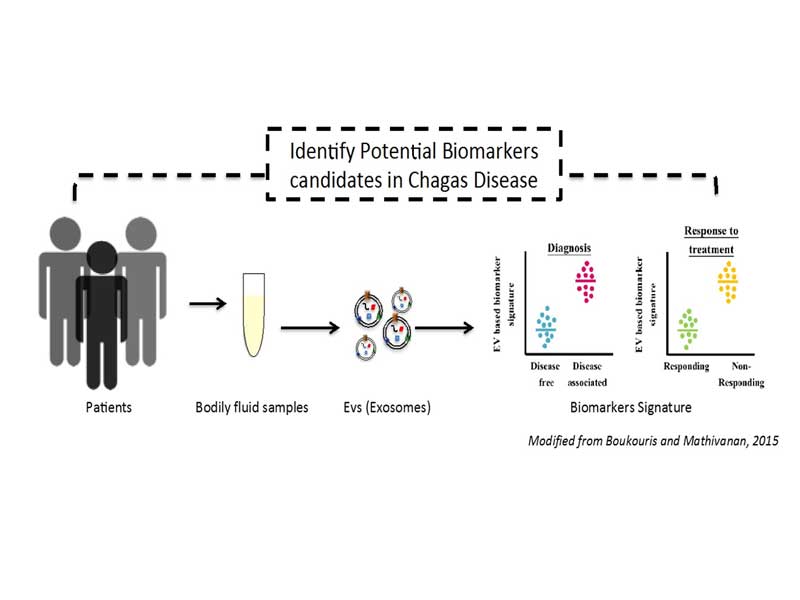Advance for researchers from the IGTP and ISGLobal seeking biomarkers for Chagas disease
The analysis of extracellular vesicles directly isolated from a patient's plasma identifies one parasite protein and 19 human proteins that decrease after treatment

Extracellular vesicles (EVs) that circulate in the blood of Chagas disease patients are a valuable tool to identify potential markers of therapeutic response, according to a study led by researchers at the ISGlobal, an institution supported by "la Caixa", and the IGTP. With this strategy, the research team identified for the first time a series of proteins, including one from the parasite, that could serve to assess the response to existing or new treatments.
Chagas disease, caused by the Trypanosoma cruzi parasite, is among the most prevalent parasitic infections in Latin America, and is responsible for several million clinical cases in the region. In addition, and as a result of the migratory flows of the last decades, the cases have considerably spread to other regions where the disease vector is not present. Therefore, there is a need to improve existing diagnostic and therapeutic tools, which are far from optimal.
One of the most urgent needs is finding good markers to evaluate early response to treatment, since antibodies, which are used to diagnose the disease, are not a good response marker (they last 10 to 20 years). For this reason, ISGlobal researchers Maria Jesus Pinazo (IGlobal) and Carmen Fernández-Becerra (ISGlobal-IGTP), joined their teams to investigate whether EVs (nanovesicles loeaded with proteins and released by almost any cell type, including pathogens) could provide a solution. In fact, the project has obtained funding by 'La Marató' TV3.
In the study's first clinical case, the research team isolated EVs directly from the plasma of a patient with chronic Chagas disease, before and after treatment. They detected a parasite protein and 19 human proteins that were present in the EVs before treatment but that decreased or disappeared after treatment. These results have set the bases for a patent, partly funded by Ginjol and Agaur-FEDER awards.
"The proteins that were present in the extracellular vesicles before treatment, but that decreased or disappeared after treatment, represent potential markers of therapeutic response, although more studies with more patients are needed for their validation," says Fernández-Becerra.
Reference
Cortes-Serra N, Tays Mendes M, Mazagatos C. Plasma-Derived Extracellular Vesicles as Potential Biomarkers in Heart Transplant Patient with. Emerging Infectious Diseases. August 2020.
